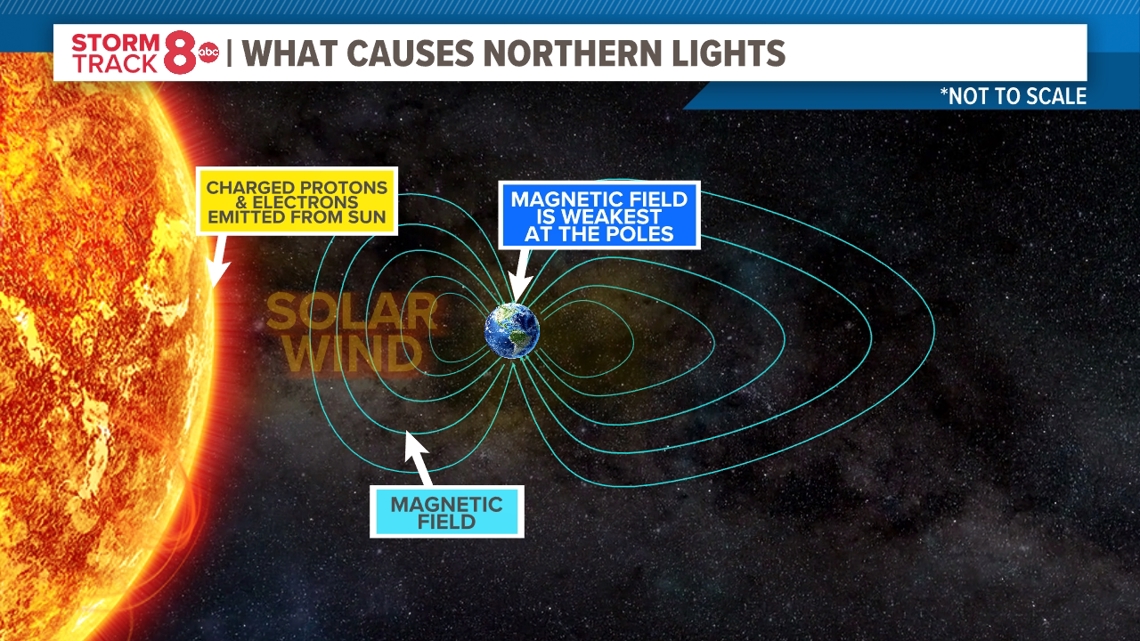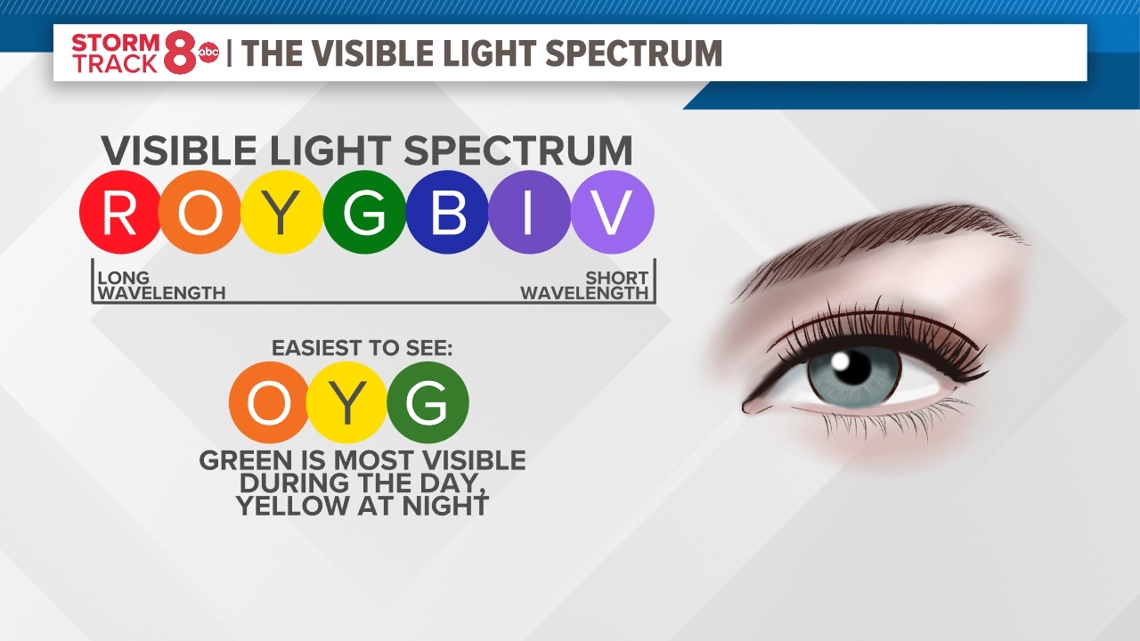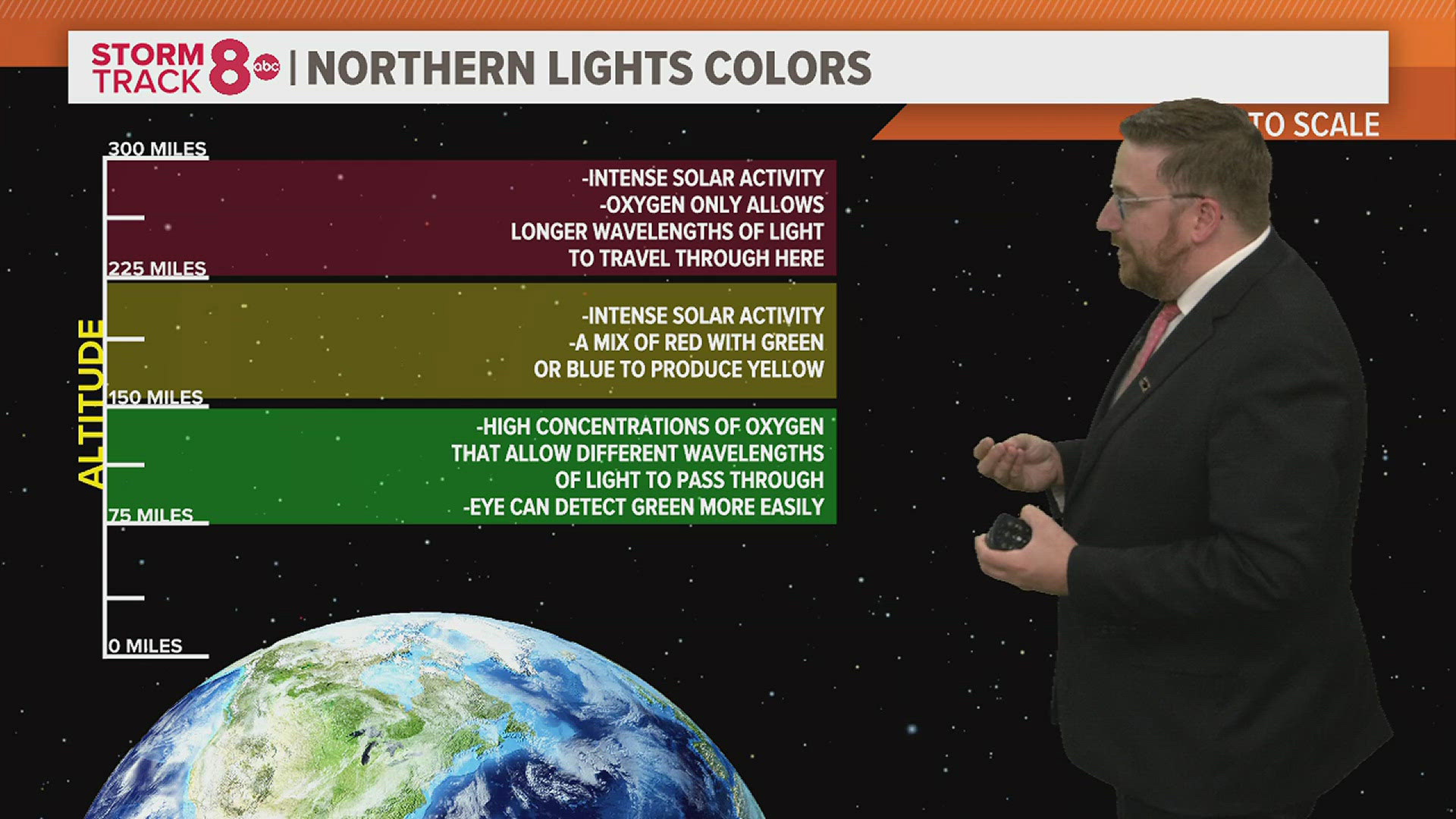MOLINE, Ill. — A rare and intense geomagnetic storm in mid-May put on a brilliant display of the Northern Lights across much of the United States. Depending on where you live, you likely saw quite a wide variety of colors ranging from yellow and green to pink and red. Shawn from Rock Falls, Illinois, was curious as to what causes the different colors to show up in the night sky. Let's dig in!
The science behind the light
Solar storms have been ongoing since Earth was created. Scientists with NASA believe these storms played a crucial role in the development of our planet. This last solar storm in particular was quite strong, causing the Space Weather Prediction Center to issue a rare G5 Geomagnetic Storm Watch. The last G5 geomagnetic storm watch was issued in October 2003. That storm caused power outages in Sweden and damaged transformers in South Africa.


The lights we observe in the sky are created by charged particles from the sun interacting with the weakest part of Earth's magnetic field, which is located at the north and south poles. The closer you live to the poles, the easier the Northern Lights are to spot. It takes a particularly strong storm, like the one we had recently, to see the Northern Lights further south heading towards the equator. Depending on the strength of the solar storm, different colors can also be observed as well. These particles are made of plasma and magnetic material from the sun's corona. When the particles hit Earth's magnetic field, currents create charges that produce energy in the form of a burst of light. That's what we are observing.
What we see and why we see it
Let's step back in time to high school or perhaps even college-level chemistry classes. You may remember learning about ROYGBIV (Red, Orange, Yellow, Green, Blue, Indigo, Violet), or the visible light spectrum. These are the range of wavelengths in the electromagnetic spectrum that we can see with our eyes.


Orange, yellow, and green are the easiest colors for us to see within this spectrum. At night, yellow is the most visible while green is most visible during the day. This is one factor that explains why we typically see a yellow, green hue to the northern lights in our sky.


The other factor influencing the color of the northern lights is the altitude at which the particles are hitting Earth's atmosphere. Yellow and green are the most common colors as these particles mix with oxygen molecules from 75 to 225 miles above the Earth's surface. Closest to Earth where the air is rich with nitrogen, you can see hints of blue coloring, especially on the bottom of the lights display. In summary, it all depends on the height above the Earth that these particles pass through.
When can I see the Northern Lights again?
The current solar cycle is expected to peak in 2025, meaning we'll likely see more talk about northern lights displays for the next several months. So, if you missed this one, no worries! You'll likely have at least one more chance in the months ahead.
Have a question that you would like me to answer for an upcoming Ask Andrew segment? Submit it, here!

